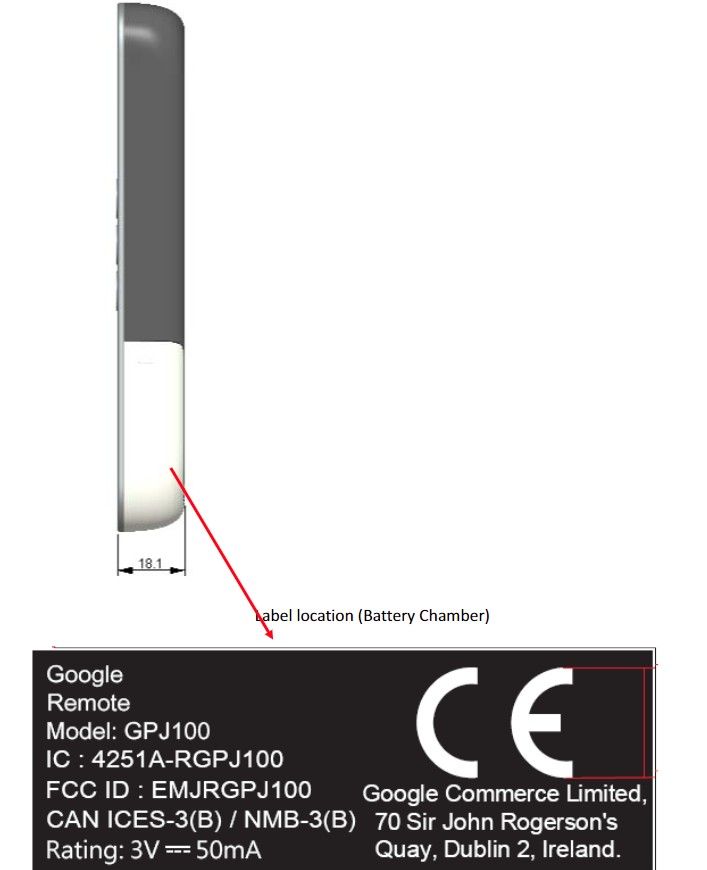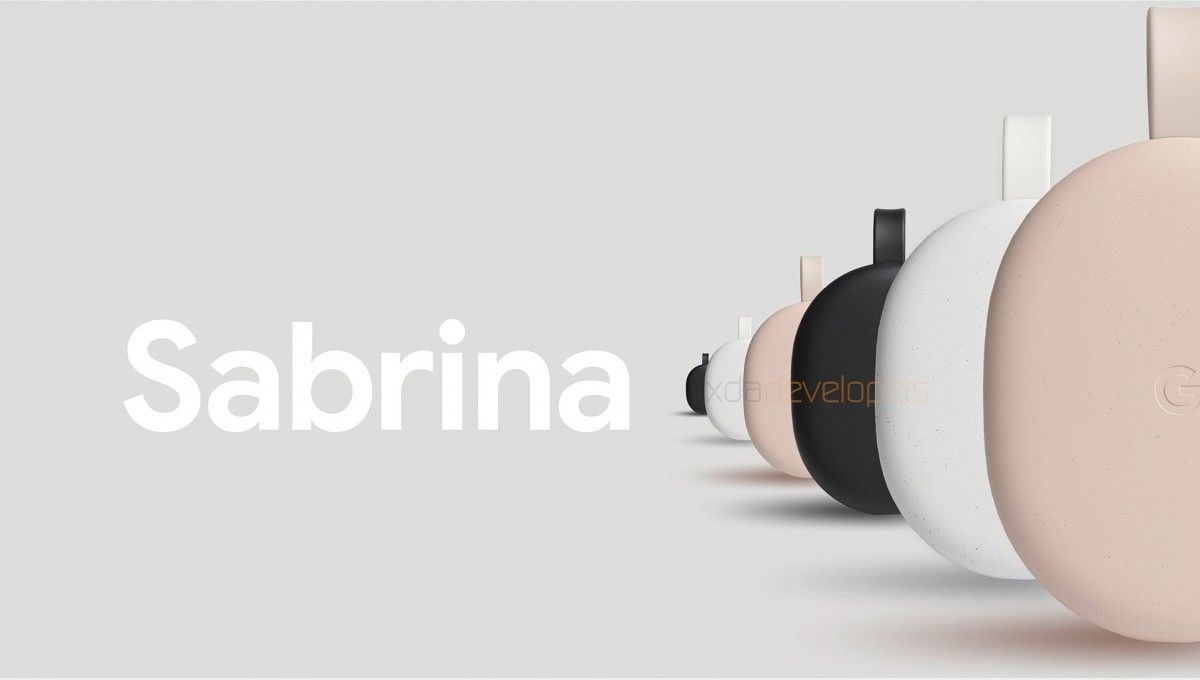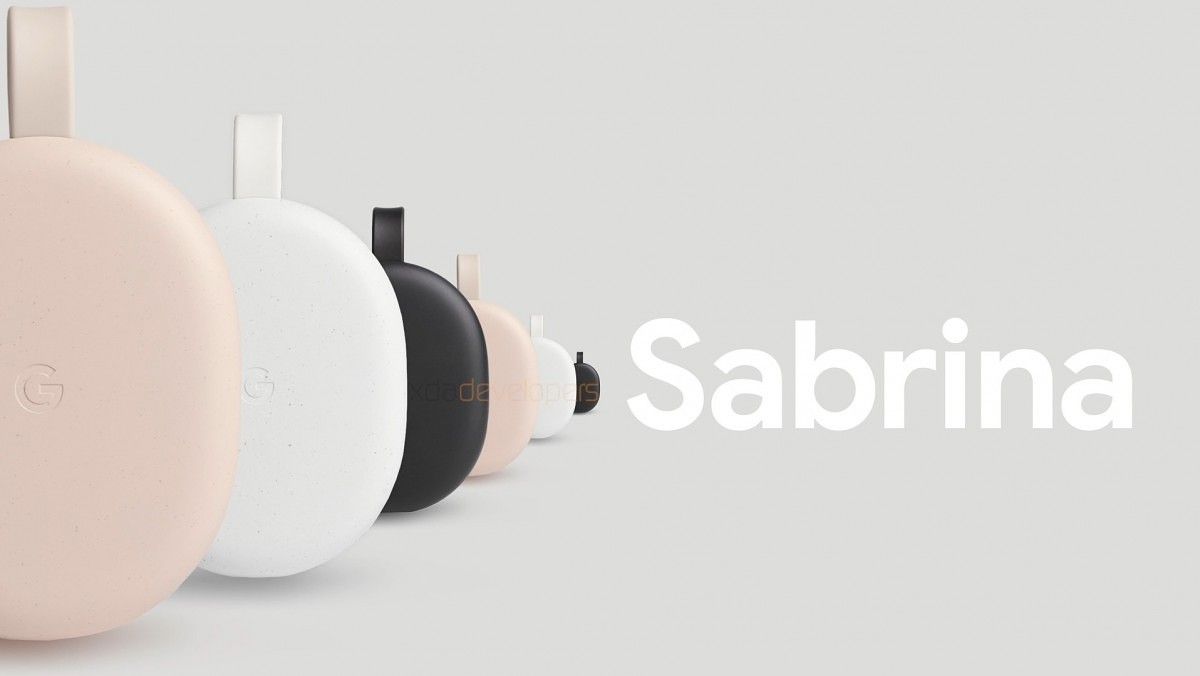Google is preparing to launch new hardware this summer, including at least a new smartphone and a streaming media device. The latter device is rumored to be the successor to the Chromecast Ultra but is expected to come with a dedicated remote and Android TV software onboard. This rumored Google Android TV dongle may launch under Google’s Nest branding and has been described as looking similar to Google’s current Chromecast device. Now, we have obtained renders of what may be Google’s upcoming Android TV dongle, code-named “Sabrina.”

In early March, Stephen Hall from 9to5Google first revealed Google’s plans to launch a new streaming media device based on Android TV with the code-name “Sabrina”. The report mentioned that Google’s new device will come with a dedicated remote, which is in contrast to earlier Chromecast streaming media devices that were operated entirely from a user’s smartphone. The same day that report went live, a certification filing for a “Google Remote” went live on the FCC’s website. Although the front of the remote wasn’t visible in the FCC filing, 9to5Google reported that the new remote essentially looks like a cross between the Daydream View and Apple TV remotes and will feature a microphone, Google Assistant button, and likely an IR blaster to make it programmable.

“Google Remote” with model name GPJ100 submitted to the FCC.
Janko Roettgers from Protocol reported in early May that this Android TV dongle will be sold under the “Google Nest” branding, which makes sense as Google has rebranded all of its other smart home devices under the Nest brand. The report as detailed on Protocol went on to say that Google is planning to revamp the Android TV UI with a more content-focused approach that places an emphasis on individual movies and TV shows rather than applications. At the same time, Stephen Hall from 9to5Google floated the idea that Android TV may be rebranded to Google TV, though it’s unclear at this point if Google has indeed settled on a name for its new streaming media device.
That brings us to today. While I am unfortunately unable to share any details on the branding, pricing, or availability of Google’s Android TV dongle, I can share what are likely official renders of the device. We obtained renders of the device code-named “Sabrina” from a pre-release firmware build shared with us by XDA Recognized Developer deadman96385.
Within the firmware was a marketing video created by a designer at Google. According to the file’s metadata, the video was created on October 10th, 2019, 5 days before the launch of the Pixel 4. The video is titled “OOBE_End,” where “OOBE” stands for “out-of-box experience,” and is shown to the user at the end up of the setup process. The video gives an overview of the Android TV dongle, remote, and new Android TV software that the user is testing. Since the video is several months old, we can’t confirm that the final design hasn’t changed slightly, but it’s likely the final product will look similar to what’s shown in the marketing video.
Google’s new Android TV dongle, Remote, and TV UI
Google’s upcoming streaming media device code-named “Sabrina” has an oblong shape, unlike the Chromecast Ultra’s rounded shape. Whereas Google’s third-generation Chromecast and Chromecast Ultra are only available in Black and White, it seems that Google’s new Android TV dongle will be available in Black, White, and a new light pink color. It’s difficult to describe the feel of the device just based on these images, but it appears it’ll have a smooth surface that gives the appearance of a sandstone-like texture.


The marketing video only shows the top half of the remote which reveals some of its controls including the rumored Google Assistant button. We’re not sure if there are dedicated Netflix or Amazon Prime Video buttons, which are both commonly found on remotes due to marketing decisions and licensing agreements. The remote is shown off in a plain white color, though there could be other colors to match the design of the Android TV dongle.

Finally, here are images that show off Google’s new content-focused Android TV UI. We can see a list of TV shows and movies at the bottom. In the middle, there’s an autoscrolling carousel of recommended titles along with the service provider that offers the content. Lastly, we can see that Android TV may soon be able to show alerts from Google Nest doorbells and video cameras, which is already possible on Assistant-powered smart displays.



Besides the marketing video, we don’t have a lot of other information to share about the new Android TV dongle. A brief analysis of the firmware reveals that the device supports Dolby Vision and is based on an Amlogic SoC, but we don’t know the exact chipset that is being used. We expect this device to launch sometime within the next few months, though there could be unforeseen changes causing a delay. After all, the Pixel 4a is now rumored to launch in July and Google’s big Android 11 Beta Launch Show no longer has a confirmed date.
As for pricing, unnamed “industry insiders” told Protocol that they expect Google’s Android TV dongle to be priced around or below $80. That would make the pricing close to the $69 price point of the Chromecast Ultra and would be competitive with Xiaomi’s upcoming Mi TV stick. In contrast, NVIDIA’s SHIELD TV streaming stick costs $149, although that device is likely more powerful than Google’s upcoming offering. As Protocol reports, Google is mainly hoping to compete with Roku and Amazon in this space, though, so the company will likely have to cut some corners to sell at such a low price point. We’ll hopefully find out soon how low that price will be.
We reached out to multiple Google spokespersons prior to publication of this article but did not hear back before publication.
The post Exclusive: This is Google’s Android TV dongle, remote, and new UI appeared first on xda-developers.
from xda-developers https://ift.tt/2AtUz8u
via IFTTT
























